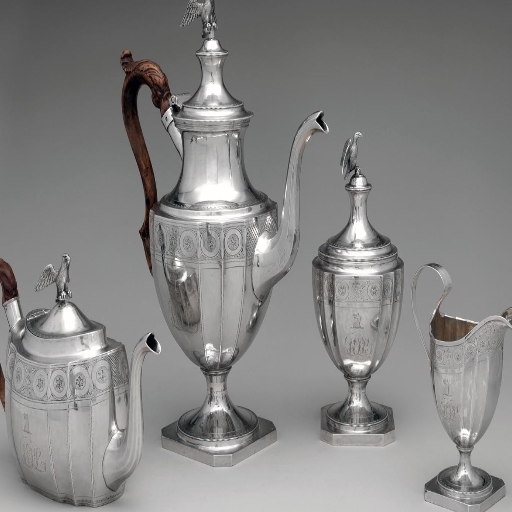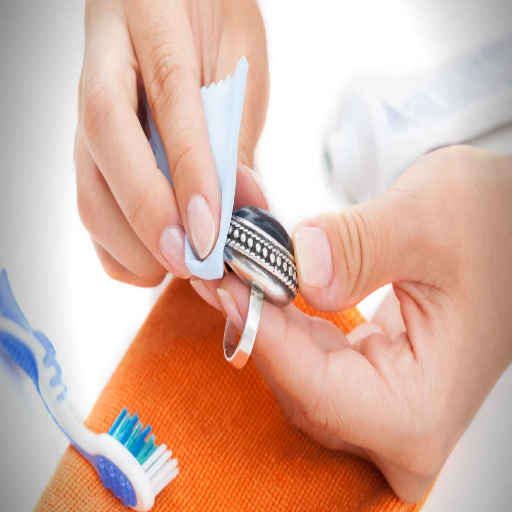When it comes to jewelry and precious metals, sterling silver remains a distinguished choice due to its timeless appeal and versatility. However, many silver owners face a common concern: why does silver develop wear or discoloration over time? This comprehensive guide explains the distinction between tarnish and rust, examines common misconceptions, and provides expert advice on preventing silver tarnishing while maintaining its lustrous appearance for years to come.
Introduction to Sterling Silver Care

The addition of copper and the absence of iron prevent sterling silver from rusting. Tarnishing occurs due to silver’s interaction with atmospheric sulfur compounds, appearing as a dark stain that can be effectively removed through proper cleaning. To prevent tarnishing, sterling silver should be stored in sealed, airtight containers away from harsh chemicals, humidity, and moisture.
Importance of Understanding Sterling Silver Maintenance
Proper care of sterling silver is essential for maintaining its value and beauty over time. Recent search trends indicate an increased interest in topics such as “how to clean sterling silver” and “preventing silver tarnish,” underscoring the need for proper education on maintenance techniques.
Effective cleaning methods include:
- Using gentle detergents like baking soda mixed with water
- Employing specialized silver cleaning agents for valuable pieces
- Proper storage in sealed containers to reduce air and water contact
Common Misconceptions About Silver Tarnish and Rust
| Key Point | Misconception | Reality |
|---|---|---|
| Inevitable | Tarnish is unavoidable | Preventable with proper care |
| Polishing | Only solution | Can cause abrasion if overdone |
| Storage | Airtight storage prevents tarnish | Gases can still seep in |
| Water | Water damages silver | Pure water is safe |
| Authenticity | Tarnish means fake silver | Tarnish shows authenticity |
Overview of Sterling Silver Jewelry
Sterling silver jewelry consists of 92.5% silver with 7.5% alloy (typically copper). This composition provides durability while maintaining the metal’s attractive appearance. The popularity of sterling silver continues to grow due to its:
- Classic beauty and versatility
- Easy maintenance requirements
- Relative affordability compared to other precious metals
- Durability for everyday wear
Tarnish vs. Rust: Key Differences

Tarnish
Forms on silver, copper, and brass through interaction with oxygen and sulfur in the air. Creates a blackish or grey surface layer that doesn’t affect the underlying metal and can be easily removed.
Rust
Occurs primarily on iron and steel when exposed to water and oxygen. Causes structural damage by penetrating metal layers, making them more susceptible to further deterioration.
What is Rust and How Does it Form?
Rust is iron oxide that forms when iron-containing materials combine with water and oxygen. Moisture and electrolytes, particularly sodium chloride (salt), accelerate this chemical process. Rust appears as a reddish-brown coating that gradually penetrates the metal, causing it to weaken and crumble.
Standard rust prevention methods include:
- Anti-rust paint application
- Using stainless steel alternatives
- Graphite coatings
- Cathodic protection systems
- Sacrificial anodes
Understanding Silver Tarnish and Its Causes
Silver tarnish occurs when silver reacts with sulfur in the air, forming a blackish-brown coating of silver sulfide. This process is more common in humid and polluted environments.
Effective Tarnish Prevention Methods:
- Store in protective cases with anti-tarnish strips
- Use silver regularly
- Apply specialized silver cleaning solutions
- Avoid exposure to sulfur-containing materials like rubber
Silver vs. Iron: Why Sterling Silver Does Not Rust
| Key Point | Sterling Silver | Iron |
|---|---|---|
| Rust Formation | No rust | Forms rust |
| Primary Cause | No iron content | Iron oxide formation |
| Reaction Type | Tarnishes (surface only) | Corrodes (structural damage) |
| Chemical Reaction | Sulfur, ozone interaction | Oxygen, water interaction |
| Durability | High | Moderate |
The Science Behind Sterling Silver Tarnishing

Sterling silver reacts with sulfur-containing compounds like hydrogen sulfide in the air. This reaction creates a silver sulfide layer on the surface, giving the metal a dark or gray appearance. Unlike rust, this oxidation is confined to the surface and doesn’t penetrate the bulk material.
Factors Contributing to Silver Tarnish
Humidity
Silver tarnishes more quickly in environments with relative humidity above 70%. Higher moisture levels accelerate the reaction between silver and sulfur compounds.
Air Pollution
Urban and industrial areas contain sulfur compounds (hydrogen sulfide, sulfur dioxide) that accelerate tarnishing. Research shows silver objects in polluted areas show more advanced corrosive damage than those in rural environments.
Contact with Certain Materials
Materials that generate sulfur during decomposition accelerate tarnishing:
- Wool
- Rubber
- Felt
- Latex
Exposure to Salt
Silver items experience faster corrosion when exposed to salt from coastal environments or salty foods, which enhances the corrosion process.
Improper Storage Conditions
Exposure to light, temperature variations, and dust in open areas increases the likelihood of tarnishing. Optimal storage requires controlled environmental conditions.
How to Prevent Tarnish on Sterling Silver

- Store Properly: Keep silver in cool, dry places, ideally in airtight containers or anti-tarnish bags
- Use Anti-Tarnish Strips: Place these in storage compartments to absorb moisture and sulfur dioxide
- Avoid Chemical Contact: Remove silver before applying perfumes, lotions, or using cleaning agents
- Wear Regularly: Frequent wear helps prevent tarnishing through natural oil protection
- Clean Gently: Remove early tarnish signs with soft cloths and appropriate polish
Proper Storage Techniques for Silver Jewelry
Effective storage prevents oxidation and maintains silver’s appearance:
- Use sealed containers, zip-locked bags, or specialized jewelry boxes
- Add anti-tarnish papers containing silver sulfide absorbers
- Store each piece separately to prevent scratching
- Avoid direct sunlight, moisture, and contact with steel
- Maintain consistent temperature and humidity levels
Effective Cleaning Practices to Maintain Shine
Regular maintenance preserves silver’s lustrous appearance:
Daily Care:
- Clean with soft cloths to remove tarnish and fingerprints
- Use lukewarm water with mild dish soap for stubborn stains
- Rinse thoroughly and dry carefully to prevent water marks
Deep Cleaning:
- Use specialized silver polish or wipes for persistent tarnish
- Avoid abrasive substances that can damage the surface
- Follow up with protective treatments when necessary
Using Anti-Tarnish Cloths and Coatings
Anti-tarnish fabrics feature advanced treatments that remove existing tarnish and prevent future discoloration. These cloths require no additional solutions – simply polish the jewelry’s surface until it regains its shine.
Protective coatings, such as anti-tarnish sprays or dips, create barriers against environmental factors. Always ensure surfaces are clean before application, and combine multiple strategies for optimal long-term preservation.
Best Practices for Maintaining Sterling Silver Durability

- Proper Storage: Use dry, cool locations with anti-tarnish materials
- Regular Cleaning: Employ gentle, non-abrasive cloths for routine maintenance
- Limited Exposure: Remove silver before swimming, bathing, or using strong chemicals
- Protective Treatments: Apply specialized anti-tarnish agents as needed
- Careful Handling: Avoid contact with lotions, fragrances, and sweat when possible
Trusted Methods to Clean Sterling Silver
Basic Cleaning Method:
- Mix warm water with mild dish soap
- Gently brush or rub with a soft cloth or sponge
- Rinse thoroughly and dry completely
Baking Soda Paste Method:
- Combine baking soda with enough water to form a paste
- Apply to tarnished areas and rub gently
- Rinse thoroughly and polish dry
Aluminum Foil Method:
- Line the bowl bottom with aluminum foil
- Add boiling water, baking soda, and salt
- Place the silver object in the solution
- Leave for several minutes, then rinse and dry
Long-Term Care for Sterling Silver Jewelry
Maintaining sterling silver quality over the years requires consistent care practices:
- Store in anti-tarnish pouches or lined jewelry boxes
- Avoid exposure to harsh chemicals, perfumes, and chlorinated water
- Clean regularly with gentle microfiber cloths
- Wear frequently to benefit from natural skin oil protection
- Have pieces professionally serviced when needed
Frequently Asked Questions (FAQs)
Reference Sources
- Dartmouth Toxic Metals: Confirms silver remains unaffected by air and water, but discolors when contacting sulfur or ozone
- Academia.edu: Academic research on metal corrosion processes, including silver behavior
- Texas Tech University: Detailed analysis of silver’s rust resistance properties
- California State University, Fullerton: Comparative studies of various metals and their corrosion characteristics
- Federal Trade Commission (eCFR): Official guides for jewelry and precious metals regulations

